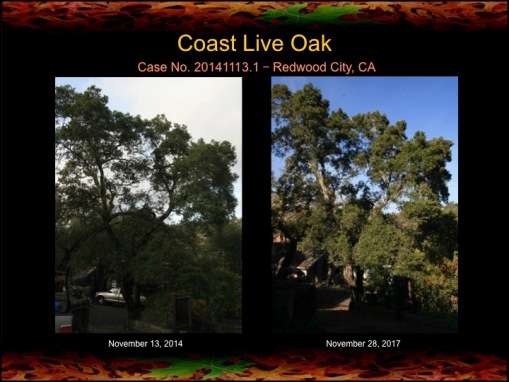
Three years ago I treated several ancient, Indian-era oaks with fire mimicry. These oak have classic lapsed-pollard shapes, indicating they were culturally modified by the native people several hundred years ago. Every oak shown here (above an below) is over 200 years old, and possibly much older. The lapsed-pollard shape is evident by the multiple large boles branching from one location near the base of the trunk. Younger oaks of the same species growing nearby typically exhibit a dichotomous branching pattern, so the anomalous shapes of these older oaks is most likely an indication that they were culturally modified (pollarded) at a younger age by California native people. The present day forms of these trees show that the pollards have lapsed, that is, the trees are no longer being tended. Pollarding is a widely used modern tending practice in orchard trees, creating broad spreading canopies that maximize fruit or nut production.
In my mind, the ancient oaks shown here are Native Americans artifacts. These oaks provided the primary sustenance of the local tribes, acorn. Oak orchards were grown, tended, and shaped by the native people in ways that helped to sustain both themselves and the bountiful wildlife.
It’s nice to have a proven model for oak forest restoration. It is the model I and others are following. Please enjoy these results!



Leave a comment